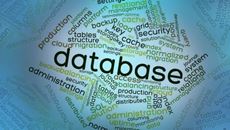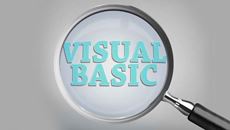- Delivery Method Online
- Professional Certificate
- 24hrs Suggested Study Time
- 3 Months Access
- Tutor Support
- Study On Any Device
- 1162 Students
Visual Basic Intermediate

Gain in-demand VB skills writing sophisticated Windows programs that access and modify business databases.
Why is Visual Basic the most widely used programming language for creating Windows applications? Because it's easier to learn and faster to use than most other programming languages.
If you're a VB programmer who wants to go beyond the introductory level to create the sophisticated and powerful programs business users need, this course is for you. As we focus on database applications, you'll learn the in-demand programming skills you need to get new work in the business world.
We'll begin by discussing how to enrich the graphical user interface with custom menus and toolbars. Next, we'll explore multiple form applications, starting with built-in dialog controls, and then turning to helper forms and Multiple Document Interface applications.
After that, we'll deepen your understanding of databases. You'll find out how to access and modify data with data-bound controls, ADO .NET, and Structured Query Language (SQL). And we'll finish up with a survey of other areas you might be interested in studying, including information on additional SQL functionality, Web applications, and XML.
Courses are delivered to you through expertly executed lessons, online instruction and interaction with like-minded students. Our courses are designed to deliver all of the benefits of studying in a classroom whilst giving you the flexibility to study at a time and place to suit your needs. You can access your classroom 24/7 from any device with an internet connection.
This course has a 3 month duration. You'll complete comprehensive lessons, quizzes and assignments before submitting your final exam at the end of the course to achieve your certificate. Courses must be completed within the 3 month access period.

Jeffrey Kent
Jeffrey A. Kent is a Professor of Computer Science, teaching both traditional and online classes. He has taught a number of computer programming languages, including C, C++, Java, Visual Basic, and Assembly. He is the published author of several c... Read more
Read Jeffrey Kent's ProfileFrequently Asked Questions
The Learning Environment
From the moment that you enrol in the Visual Basic Intermediate you will become an integral part of our learning community. You'll find yourself with the freedom to learn at a speed that suits you, on any device, from anywhere in the world. Achieving your career goals no longer has to mean compromising family and work commitments.
Ready to get started?
Enrol NowOur Values
Learn At Your Own Pace
We believe in personalised learning. That's why we provide all the tools and support you need to succeed at your own pace. With flexible learning, you'll stay motivated and retain more information. Plus, you can balance your studies with work and family commitments to make your dreams a reality.
We Won't Break The Bank
Education should be accessible to anyone who wants to learn. That's why we offer some of the most competitive prices in the industry with payments plans for just $25 per week. Investing in your future is a smart choice and doesn’t have to break the bank.
Industry-Led Courses
There's no better way to learn than from experts with years of experience in your field. That's why each of our 200+ industry-led courses are designed to give you a real-life perspective on your industry. With our expert mentors, you'll learn from people who have a wealth of knowledge and experience, and who are passionate about sharing it with you.
Get The Personal Support You Deserve
At Vibe Learning, we're real people who are dedicated to providing you with personal support every step of the way. Our industry experts are not only professional and knowledgeable but also incredibly passionate about sharing their expertise with you. With their guidance, you'll gain invaluable insights and practical knowledge to help you succeed.
Still looking?
Check out the following courses related to Visual Basic Intermediate:


